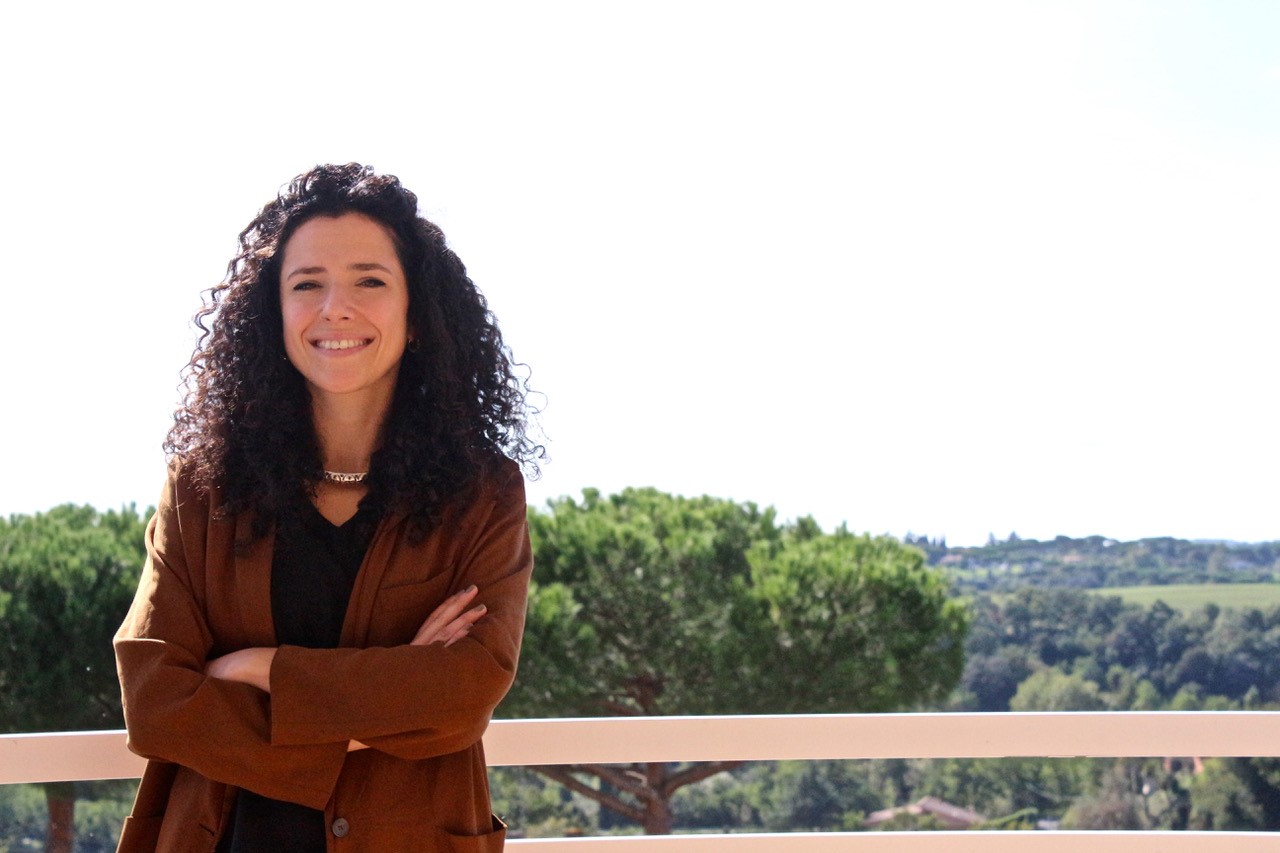SciArt Profiles: Marzia Munafò
Posted by the Node, on 30 April 2021
Our eighth profile in the series features Marzia Munafò, a postdoctoral researcher currently based in Rome.

Where are you originally from and what do you work on now?
I am originally from Rome. I recently completed my PhD in Medical Sciences at the University of Cambridge UK and I am now a postdoctoral fellow at EMBL Rome. I am a molecular biologist by training and I have worked mostly on RNA biology. During my PhD I investigated how small RNAs protect the genome from transposon activity, using Drosophila as a model organism. For my postdoc I am now focusing on understanding epigenetic inheritance and transposon regulation in mammals.
Where you always going to be a scientist?
I would say that curiosity in general has always played an important role in my life. I was an inquisitive, curious child who really enjoyed learning about the world. What initially sparked my interest for biology was learning about Mendel’s laws of inheritance in secondary school but I didn’t really consider becoming a scientist until much later. It was towards the end of high school when I realised that the one job that would fulfil my curiosity and passion for learning would be a career in research. Having realised that, biology was a natural choice for me.
And what about art – have you always enjoyed it?
Absolutely yes. Drawing is the thing that I remember loving ever since I was a child. I was always drawing my favourite characters from comics, books or movies and even more from my imagination. At some point I really wanted to become a comic book illustrator!
What or who are your artistic influences?
I think my drawing “style”, so to speak, owes a lot to the Disney comics I used to read in my childhood/teenage years and more generally to the visual aesthetics of cartoons and anime from the 90s. I also deeply love fantasy literature and often draw characters and scenery from books, with The Lord of the Rings being my main inspiration above all.
Speaking of scientific illustrations, one of the artists I admire the most is David Goodsell. I find his way of drawing the crowded interior of a cell so elegant and thought-provoking!

How do you make your art?
Nowadays I mostly use digital media for my illustrations. Digital art is truly amazing, it offers so many opportunities and I have just scratched the surface of its potential. When I approach a new artwork I usually spend most of the time thinking about the message I want to convey. If I am working for someone else I try to grasp the main scientific concepts and do a bit of research to see how people typically represent that something. Once I have a rough idea of what I am aiming for, I move to the actual painting. I find it somewhat liberating to stare at the white canvas and just go with the flow, without knowing what the final result will look like. It’s a nice contrast with my daily routine as a researcher, where everything is much more schematic and there is no room for improvisation. Nonetheless, in my view science is also a creative process. Thinking outside the box to formulate new hypotheses or devising innovative technologies requires some degree of creativity, so the two worlds are not so far apart.
“I find it somewhat liberating to stare at the white canvas and just go with the flow“

Does your art influence your science at all, or are they separate worlds?
Finding a way to combine my creativity and my scientific education has definitely helped me to grow as a scientist and also consolidated my enthusiasm for research. First, having this side-project has helped me to balance out a lot of the stress during the final years of PhD. It was very important to have my own happy place to switch the brain off and recharge batteries. Secondly, I like thinking about scientific concepts without constraints and just letting my imagination go. It’s a different approach to science, as I don’t have to be rigorous but I can just take the main facts and shift them into a new perspective. I enjoy having my imagination take the lead and drawing without strictly adhering to canonical imagery. At the end of the day, doing this makes me even more fascinated by the wonders of biology!

What are you thinking of working on next?
I don’t have a clear plan of where I’m going with my scientific illustrations, but I definitely want to perfect my skills in digital painting and challenge myself with something new, like animation or 3D. Communicating science to peers and public is something I deeply care about, so I’m hoping that my illustrations can help people come closer to biology.
Check out Marzia’s website www.munafomarzia.com and Twitter page https://twitter.com/munafomarzia
We’re looking for new people to feature in this series throughout the year – whatever kind of art you do, from sculpture to embroidery to music to drawing, if you want to share it with the community just email thenode@biologists.com (nominations are also welcome!).


 (4 votes)
(4 votes)